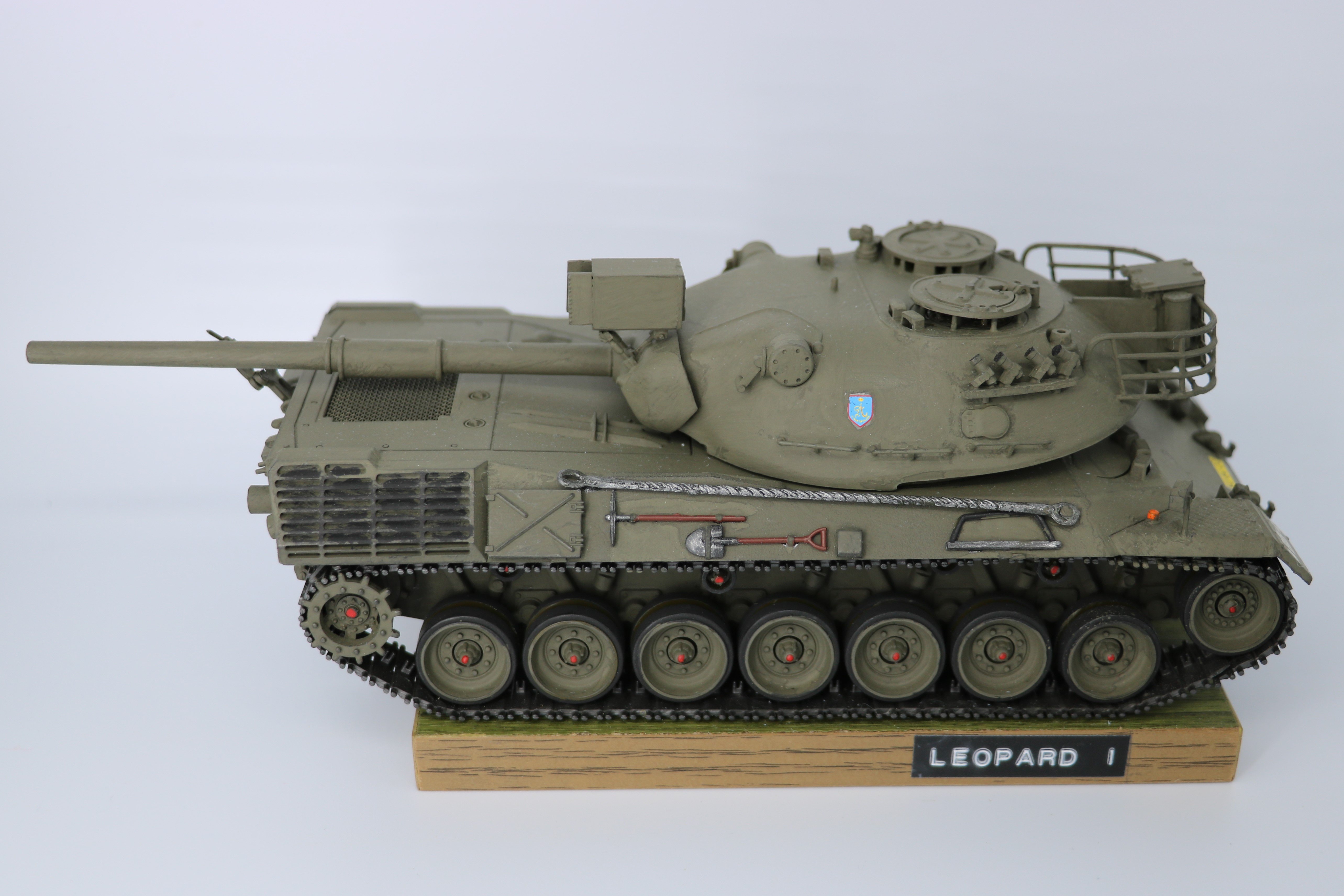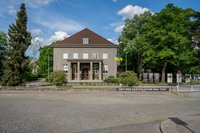Ein handgefertigtes Modell des deutschen Kampfpanzers Leopard I im Maßstab 1:35. Leopard I war der erste nach dem Zweiten Weltkrieg in Deutschland entwickelte Panzer. Insgesamt wurde er in 13 Staaten auf fünf verschiedenen Kontinenten eingesetzt. Der Hersteller des Modells arbeitete während des Zweiten Weltkrieges in einer Panzerwerkstatt. Eine ausführliche Beschreibung der technischen Daten und die Abmessungen des Originalpanzers befinden sich auf der Unterseite des Sockels.
en

